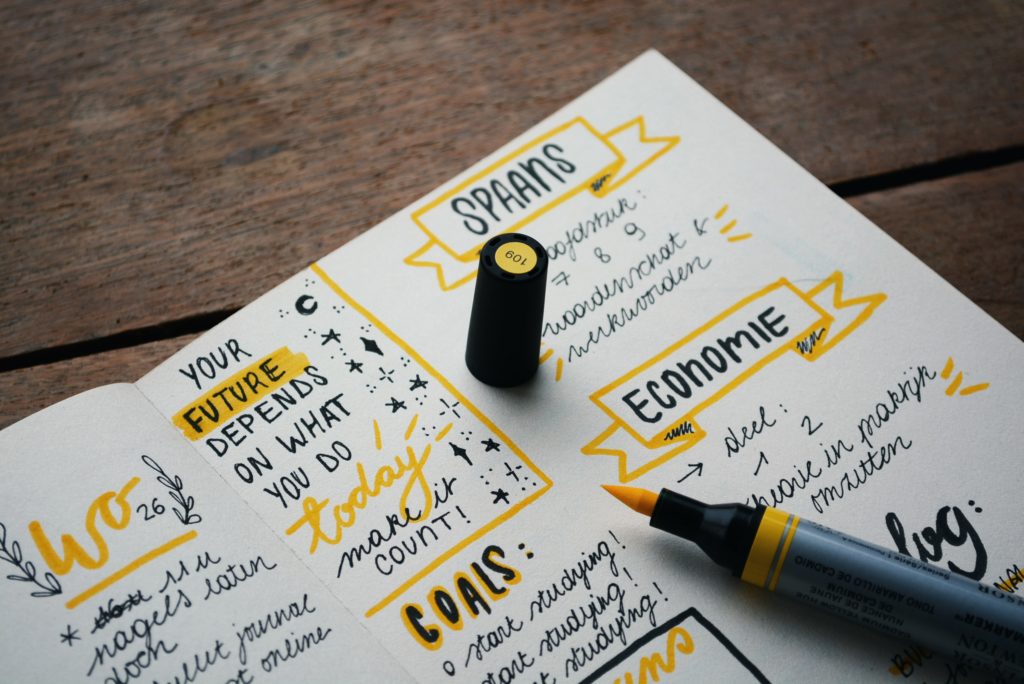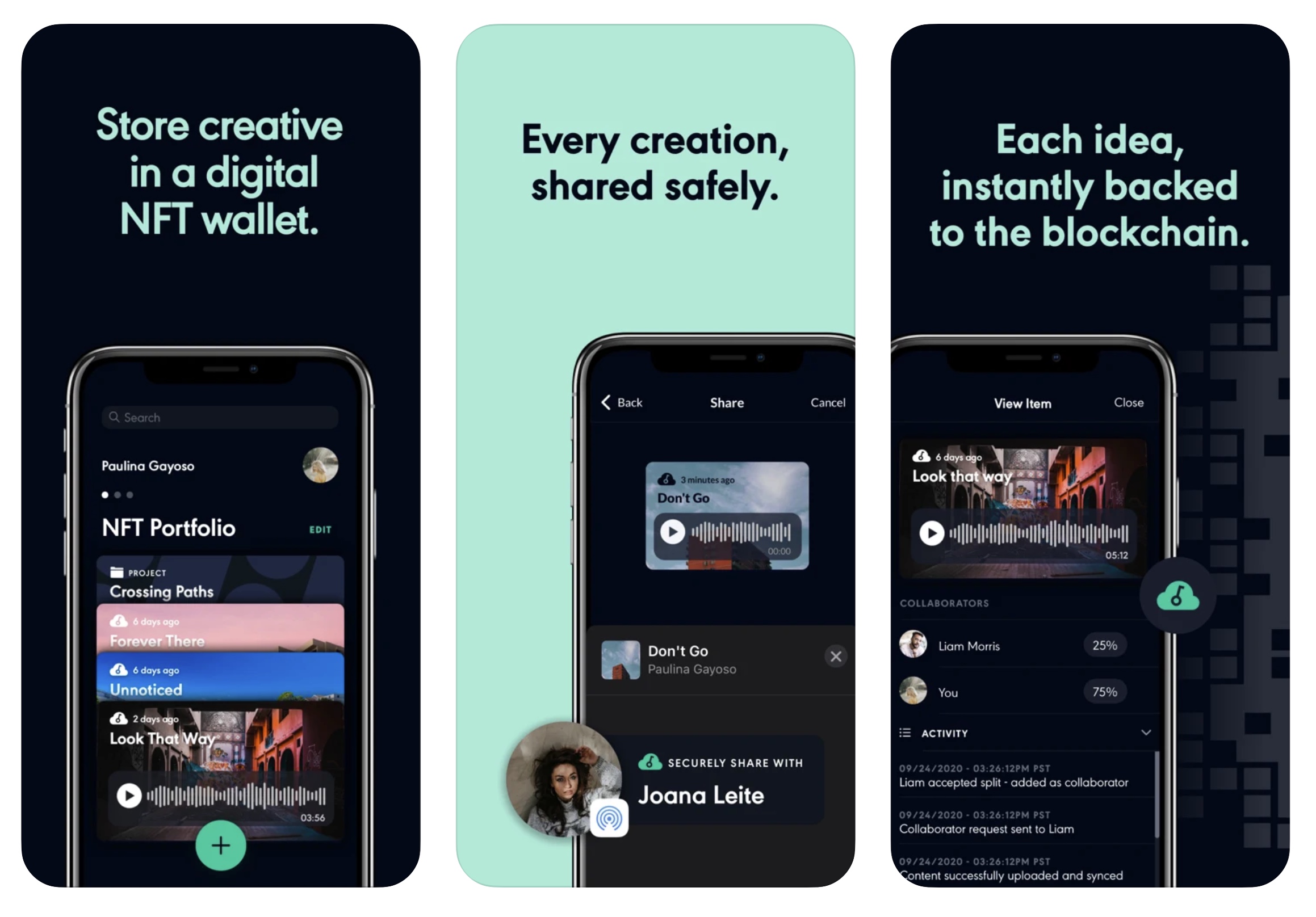
The 7 best MyProtein flavours (UK – 2025)
In the UK every day there seems to be a new supplement company popping up promising the best tasting Protein powder out there. While there are plenty of great options out there, in terms of balancing quality, price and taste, it is hard to beat MyProtein. Another area that marks MyProtein out from other protein manufacturers is the sheer volume of flavours. As of today there are over 50 different flavours of Impact Whey available, so where do you start!? In this week’s T7L, we are looking at the 7 best MyProtein flavours to make that dcesion a bit easier.
Here’s our Top 7 that we are loving right now…
Best MyProtein flavours #1: Vanilla and Raspberry
The king. MyProtein has combined a classic vanilla flavour with a hint of delicious raspberry flavouring in this flavour, and we have to admit it’s a personal favourite out of the entire Impact Whey range! This tastes great whether you blend it with water or milk, and in both the shakes have a great consistency. We had no lumps using a regular shaker, and the milk provided a more creamier consistency as well as a wonderful flavour combo. The vanilla flavour isn’t overpowering, but there are enough touches of it throughout the shake to make it sweet but not sickly. We found vanilla and raspberry to be the best, with 21g of protein per scoop and an easy-to-digest blend.
Best MyProtein flavours #2: Chocolate Brownie
The Chocolate Brownie flavour of MyProtein’s Impact Whey was without a doubt one of the most popular among those we spoke to. Although many of those we polled weren’t exactly big fans of chocolate drinks, this brownie-inspired flavour received unanimous approval from all tasters. It may sound unusual, but this shake’s flavour and consistency are excellent when mixed with either water or milk, though we preferred it with milk.
This protein packs a punch with 18g of protein per scoop and only 98 calories, 1.9g of fat, and 2g of carbohydrates each scoop. We liked how smooth the consistency was and how easy it was to absorb. Two scoops post-workout are recommended for good recovery, and you can even mix it in with your overnight oats for a chocolatey breakfast treat if you’re so inclined.
Best MyProtein flavours #3: Apple Crumble and Custard
Smething a bit different, but very much genuine in flavour – the custard is the dominant flavour, but there are notes of apple at the end. This is fantastic with oats. If you’re looking for something sweet that’s a little different, this is a good option. The only drawback is that the flavour is quite mild, not necessarily a bad thing considering that some protein powders can be very overpowering, but nonetheless the custard and apple notes could be boosted a notch or two.
Best MyProtein flavours #4: Chocoloate Caramel
One for the Caramel lovers and people with a sweet tooth. As soon as you open the pack you get hit with Cadbury’s caramel vibes and the caramel notes stay with you even if you lose the chocolate taste quite quickly. If you are a carmel lover, this is the one for you!
Best MyProtein flavours #5: Salted Caramel
Another one for the Caramel lovers. In my opinion, this is one of the best flavours in the MyProtein line. It’s a big sweet hit, but the salty component helps to balance it out. At course, it tastes like caramel, as you’d expect, but it does a fantastic job of tasting precisely like what it says it does, which is something that many protein shakes fail to achieve. If you’re not a fan of sweet dishes, this may be too much for you, but here at T7L, we love it.
Best MyProtein flavours #6: Chocolate Orange
Into your Terry’s Chocolate Orange? If so, you’re going to love this. If not, maybe give it a swerve. The chocolate orange protein powder is intriguing; personally I enjoy chocolate orange, so the flavour combination appeals to me. When blended with milk, it tastes like a chocolate orange milkshake. When mixed with water, it’s not as good as many other chocolate protein shakes, but when blended with milk, it’s fantastic! It’s not very sweet, and the orange flavour isn’t overpowering, but you can definitely taste it.
Best MyProtein flavours #7: Chocolate Coconut
The chocolate coconut took me by surprise; I expected it to taste artificial, but it’s actually a wonderful, sweet drink with no artificial flavour. It’s similar to a subtle Bounty bar, but with a somewhat stronger coconut flavour than a Bounty. This one, in my opinion, works better with water, although either one would suffice. Even if you aren’t into Bounty’s (like me) this should still go down well!
Best MyProtein flavours: Honourable Mentions
- Hokkaido Milk
- Chocolate Mint
- Tiramisu
- Summer Fruits
- Natural Strawberry

Found this interesting or useful and looking for more of the same? Follow @the7lists on Twitter, Like us on Facebook or sign up to the newsletter below to get the latest 7 Lists goodness delivered straight to you!
SUBSCRIBE HERE FOR CURATED GOODNESS FROM THE 7 LISTS DELIVERED STRAIGHT TO YOUR INBOX

7 best Smokeless Fire Pits (UK – 2025)
With Winter just around the corner and nights drawing in after the “glorious” British Summer of 2021 (what summer?!), there are few greater joys than sitting around a fire pit with friends and family to warm up while enjoying the outside and fresh air. Although there is one problem. The air isn’t so fresh when the wind turns and the smoke blows in your direction! This is no longer a problem as there are now some fantastic and great value Smokeless Fire Pits on the market, meaning you can enjoy the warmth, comfort and and aesthetic appeal of a firepit in your garden and not deal with the pesky smoke (Caveat: Smokeless fire pits are not 100% smokeless—but they come very close indeed. They produce a lot less ash than traditional wood fire pits and aren’t as messy, plus they won’t leave a smoky smell on your clothes). This week at The 7 Lists, we are looking at 7 of the best Smokeless Fire Pits that you can currently buy in the UK!
Solo Stove Bonfire
Market leaders in the Smokeless Fire Pit space, the Solo Stove bonfire is one of the most popular Smokeless Fire Pit options we have in this list.
Highly portable so you can use it in the grden to take away with you on your travels, it produces a minimal amount of smoke due to the secondary combustion technology it uses. Not only does the secondary combustion reduce smoke but it also reduces the fuel consumed, making it efficient and economic. The construction also ensures an even burn throughout and no more half burned logs!
The design is minimal but classic enough to not look out of place in most gardens. The Ash Pan at the bottom catches loose ash and prevents it from clogging vital airflow, and also acts as a heat shield and reduces the heat transfer from your fire to the ground beneath it.
With it’s good looks, minimal setup and unparalled ease of use, the Solo Stove bonfire comes highly recommended.
BioLite FirePit
The BioLite FirePit is another highly portable and efficient Smokeless Fire Pit. The latest version shows technical progressions that set it apart from many other Smokeless Fire Pit options on the market.
It is light and portable, so perfect to take away camping where you can enjoy the warmth, smell, crackle, and feel of a wood campfire, without any of the smoke. It’s easy to clean and keeps heat, stray embers, and smoke contained.
The latest upgraded body design radiates heat outward. Optional carry cover recharges the battery from the sun. The latest version has an upgraded High-temp enamel coating for durability and easy cleaning.
In addition, the latest upgrade to the awared-winning BioLite FirePit creates hyper-efficient flames with patented airflow technology and gives you a front-row seat to the magic thanks to the X-Ray mesh body, enabling 360 views. You can also control the size of your flames manually or remotely with the free Bluetooth app.
One cool addition that sets the BioLite apart is that you can lift the fuel rack and toss in charcoal to transform it from a fire pit to a portable hibachi style grill, complete with an included grill grate.
The BioLite FirePit comes recommended for those who are looking for a technical edge and looking to take their camping experience to the next level.
Dragonfire Smokeless Outdoor Wood Burning Fire Pit
The Dragonfire Smokeless Fire Pit is a sturdy but portable Smokeless Fire Pit option with safety at it’s heart
While a fire pit may be smokeless, but that doesn’t mean sparks won’t fly. The Dragonfire includes an elegant spark screen that helps to protect you, your guests and the patio or deck surface by containing the sparks and embers in the fire pit, while still being able to enjoy the warm fire.
The Dragonfire fire pit features a double-walled construction that efficiently circulates the air, resulting in the smokeless effect. In addition, this firepit has a removable stand, deflector ring to raise it off the ground below, plus a waterproof cover. The fire pit is large enough to hold 16-inch logs, but there’s no pan for ashes at the bottom, which could be inconvenient.
The Dragonfire Smokeless Fire Pit is also built to last as it is made of premium quality alloy steel, which makes it rust-resistant, fade-proof, and super durable for your long-term use
Innostage Fire Bowl Pit
The Innostage Fire Bowl Pit is a great value Smokeless Fire Pit option for those on a budget.
Being the least expensive firepit on this list, it still packs great value despite the low price. It is well designed and the Double Wall Design maximises the airflow and burning process, which results in greatly reduced smoke and more flame. The bottom vent holes allow oxygen in while the double walls warm it. Minimal smoke and a highly efficient design.
It’s simple to set up with 2 parts that connect together and it’s perfect for patios. The portable handles make it possible to shake ash to keep air through, while it is also easy lift up and attempt dump the ash via the bottom underlying tray when the fire is fully extinguished and it is cold.
If you are looking for a smokeless fire pit on a tight budget, the Innostage Fire Bowl Pit is a great option for you.
Blue Sky Portable Smoke-Free Fire Pit
Falling in the mid-bracket price range, the Blue Sky Portable Smoke-Free Fire Pit is efficient and simplistic designed Smokeless Fire Pit with some cool customisation features.
The Blue Sky firepits are an innovatively designed fire pit with the ability to burn with little smoke, sparks, ash, or odours. There are a number of different versions you can buy with your favourite NFL, NHL or NCAA team’s logo on it, so it’s a great gift for the sports fan in your life.
With limited assembly needed, and quick ability to carry and store, Blue Sky brings you a highly durable and transportable fire pit. It has a simple and easy clean-up and take-down.
The firepit generates a significant amount of heat without putting in much effort and using minimal fuel. You can easily clean it up and also carry it around because of its convenient size and negligible weight. It is easy to maintain, clean and keep.
TIKI Low-Smoke Fire Pit
The TIKI Low-Smoke Fire Pit is probably the most elegant and best looking Fire Pit on this list.
It’s unique design, with streamlined horizontal slats and angled midcentury-modern legs, sets it apart from othe fire pits from an aesthetic perspective, but it is more than just a great looking firepit. Made with premium-grade stainless steel, it is lightweight and easy to carry anywhere you want with great reliability and durability.
From an efficiency perspective the TIKI outdoor fire pit has a patent-pending internal airflow system that creates a better fire with a cleaner burn. Therefore, it produces low smoke and minimum amount of ash while performing.
If you are looking for a great looking option to impress your garden guests, the TIKI Low-Smoke Fire Pit is the one for you.
Cast Master Bon 2000
The Cast Master Bon 2000 is the best Smokeless Fire Pit for the cooks out there.
It is is brilliant for hibachi-style grilling. The BON 2000 Bonfire Pit features an advanced, stainless steel design built to last for years of use. Whether you cook with it, or just enjoy a backyard fire to create the perfect mood, we’ve got you covered.
The fire pit weighs about 33 pounds and there’s a durable carrying case included, so it is perfect for camping trips where you want to cook up some grilling awesomeness as well as having a great smokeless fire experience!

Found this interesting or useful and looking for more of the same? Follow @the7lists on Twitter, Like us on Facebook or sign up to the newsletter below to get the latest 7 Lists goodness delivered straight to you!
SUBSCRIBE HERE FOR CURATED GOODNESS FROM THE 7 LISTS DELIVERED STRAIGHT TO YOUR INBOX

7 of the Best AI Writing Tools
In recent months we have seen an explosion in the use and arrival on the market of AI Writing Tools. The tools aim to make content creators lives easier by utilising AI to automate multiple areas of the writing process. Google searches for “AI writing tool” have increased by 2400% in the last 24 months, and this trend is likely to see even more growth when the highly-anticipated GPT-4 model becomes available. GPT-4 is forecasted to have around 100 trillion parameters (parameters are to the GPT model what neurons are to the human brain), a 500X increase over GPT-3, so these tools will only become more powerful and versatile as the technology advances. There are several great tools on the market right now, so this week on T7L we look at some of the best AI Writing Tools currently on the market.
7 Best AI Writing Tools #1 – ChatGPT
Everywhere you look right now, everyone is talking about ChatGPT. I recently had the opportunity to use ChatGPT and was extremely impressed with its performance. The tool is incredibly intuitive and easy to use, allowing me to quickly generate high-quality and coherent responses to a variety of prompts.
One of the things I particularly appreciated about ChatGPT is its ability to understand and respond to context. When I asked follow-up questions or provided additional information, ChatGPT was able to incorporate this into its responses, resulting in a more natural and engaging conversation.
I also found the suggestions and prompts provided by ChatGPT to be quite helpful in guiding the conversation and keeping it on track. This was especially useful when I was using the tool for customer service purposes, as it allowed me to efficiently handle multiple conversations at once without losing track of any important details.
Overall, I would highly recommend ChatGPT to anyone in need of a reliable and effective tool for generating responses to a variety of prompts. Its versatility and ease of use make it a valuable asset for anyone looking to improve their communication skills or streamline their customer service process.
Best AI Writing Tools #2 – Rytr
Rytr is Rytr is an AI-powered writing assistant. For blogs, YouTube videos, emails, social network posts and ads, landing sites, and much more, Rytr enables you to create high-quality AI content. Multiple languages and tones are also supported. It is built on cutting-edge technology known as the GPT-3 AI model (Generative Pre-trained Transformer 3), which assists in producing original and plagiarism-free work in only a few minutes.
Besides proofreading and plagiarism checking, like many AI writing assistants, Rytr can create content based on a few descriptive sentences. According to Rytr, their solution can “increase writing efficiency by 10x”.
Almost anything may be used to generate content using Rytr, including metadata, blog posts, interview questions, and song lyrics. It is capable of writing almost any kind of content you would require. This said, short-form content seems to be where the programme excels. For example, it performs well while sending emails and posts to social media. It does however require a lot of support for long-form material. Despite having a blog post option, it can only produce nice openers but not complete posts.
Rytr has a limited Free Plan, but you need to utilise the paid plans to take full advantage of the functionality. The Saver Plan allows you to generate 50k* characters per month, access to 30+ use-cases, write in 30+ languages, access 20+ tones, utilise its built in plagiarism checker, access to its premium community and lets you create your own custom use-case for $9 a month or $90 a year.
Best AI Writing Tools #3 – Writesonic
I recently started using Writesonic for one of my blogs and have been extremely impressed with the level of professionalism and quality of the tool’s output.
The writing produced by Writesonic is top-notch and always exceeds my expectations. The tool seems to have a remarkable grasp of my brand voice and is able to craft content that is engaging and relevant to my target audience. The solution consists of three products: a marketing copy generator, an AI article writer and a product description generator, and supports 24 languages.
In addition, the prices offered by Writesonic are very competitive and they offer a variety of services to meet different needs. Overall, I highly recommend Writesonic for anyone looking for a tool that offers high-quality writing and excellent customer service.
Best AI Writing Tools #4 – Copy.AI
I have been using copy.ai for a few months now and have been impressed with the results. Not only is the AI technology advanced and efficient, but the user interface is user-friendly and easy to navigate.
One of the main reasons I chose copy.ai was for its ability to generate high-quality content quickly. With copy.ai, I can simply input a topic and within seconds, I have a well-written and informative piece of content.
I have also found that the AI technology is able to produce content that is on-brand and in line with the voice of some of my blogs. I have received numerous compliments on the content that I have generated through copy.ai, with many readers not even realizing it was written by an AI.
Overall, I highly recommend copy.ai to anyone in need of high-quality content in a short amount of time. It has greatly improved my productivity and allowed me to focus on other aspects of my business.
Best AI Writing Tools #5 – INK Editor
As a writer, I am constantly looking for tools that can help me improve my work and make the writing process more efficient. INK Editor has definitely delivered on that front.
The writing aids provided by INK Editor are top-class. The grammar and spelling checker is extremely accurate and has caught several mistakes that I might have missed on my own. The thesaurus and word suggestion tools have also been really helpful in finding the perfect words to convey my ideas.
One of the things I love most about INK Editor is its intuitive and user-friendly interface. It’s easy to navigate and find the features I need, which has really helped me to focus on my writing rather than getting bogged down by complicated menus and options.
Overall, I highly recommend INK Editor to any writer looking for a powerful and user-friendly writing tool.
Best AI Writing Tools #6 – Sapling
I have now had a few weeks of exoperiwence working with the AI writing tool, Sapling, and I’ve been impressed.
One of the things that I really appreciate about Sapling is its ability to generate unique content. It has a huge database of synonyms and phrases, which means that it can create completely original content without any plagiarism. This is especially useful when I need to write multiple articles or blog posts on the same topic.
Finally, I have to mention the customer support team at Sapling. They are always available to help with any questions or issues that I have had and have always been very responsive and helpful. Overall, I have had a great experience using Sapling. It’s a solid, cost-effective and well-supported option.
Best AI Writing Tools #7 – ProWriting Aid
I have been using ProWriting Aid for the past few months and have been extremely impressed with its functionality and effectiveness. The program is designed to help writers improve their grammar, style, and overall writing quality, and it does an excellent job of doing just that.
Onoe of the features I love is the style checker, which analyzes my writing for things like readability, sentence length, and word choice. It provides helpful suggestions for improvement, and I have found that implementing these suggestions has made my writing more engaging and effective.
Overall, I highly recommend ProWriting Aid to anyone looking to improve their writing skills. It is a valuable tool for writers of all levels, and it has certainly helped me become a better writer.

Found this interesting or useful and looking for more of the same? Follow @the7lists on Twitter, Like us on Facebook or sign up to the newsletter below to get the latest 7 Lists goodness delivered straight to you!
SUBSCRIBE HERE FOR CURATED GOODNESS FROM THE 7 LISTS DELIVERED STRAIGHT TO YOUR INBOX

7 ways to improve your credit score (UK – 2022)
In these uncertain economic times, it has never been more important to have a strong credit score. If you’re applying for a mortgage, a loan or even a mobile phone contract in the UK in 2022, then your credit score will be key to deciding your eligibility. So this week on T7L we are looking at 7 ways to improve your credit score. Improving your credit score is a marathon, not a sprint, so if you are looking for ways to quickly improve your credit score it may not be something that happens overnight, but there are certainly methods you can take to incrementally push those scores up. Some actions may make a swift change, but credit scores are determined by a combination of factors, so you may have to address a number of issues over some time to see a difference. So if you are looking to understand how to improve your credit score, then read on.
A lender will not employ a single, uniform credit ‘rating’ or’score’ when assessing whether or not to accept you as a customer. There is no such thing as a “credit blacklist” anyway. A credit reference agency (CRA), most likely one of the ‘big three’: Experian, Equifax, and TransUnion, will submit your credit report to your chosen lender. A credit score is calculated using the information in your credit report. While they all calculate your score in slightly different ways, the majority of the elements they utilise are the same.So, whether you’re trying to improve your score after the financial strains of 2022, or simply trying to ensure you’re offered the best products this year, there are a few easy steps you can take to maximise your score.
Each of the three major credit reference agencies in the UK has a scale for determining what constitutes a “good” or “excellent” credit score.
- Equifax 531 to 670 is good; 811 to 1,000 is excellent
- Experian 881 to 960 is good; 961 to 999 is excellent
- TransUnion 604 to 627 is good; 628 to 710 is excellent
While having a ‘good’ or ‘outstanding’ credit score can help, it does not guarantee that all lenders will extend credit to you or treat you equally. Each lender has its own set of criteria for selecting whether or not to lend to you, so you could be turned down by one but accepted by another. If you have a low or ‘poor’ credit score, you’ll be more likely to be turned down when applying for a loan, therefore you should work to raise it. Read on for our top 7 ways to improve your credit score.
Ways to improve your credit score #1: Never miss a payment
Being able to establish that you are a responsible borrower, that you can pay your payments on time and keep within any limits you’ve been allowed, is critical to your credit score. Demonstrating that you can pay on time and keep within your credit limit can help lenders see you as a responsible borrower.
Unfortunately, this is harder than normal in 2022 because of the rising cost of living. If you are having difficulty paying off your debts or making minimal payments, you should notify your creditors as soon as possible and try to negotiate more assistance. If you miss a payment or are late with one, it will appear on your record within a month. According to Experian, one late payment on a credit card or loan can lower your score by as much as 130 points. A late payment will appear on your credit report for six years, however the impact will diminish with time. If you’ve just missed one payment, your credit score may begin to improve after six months and should be entirely restored after a year.
Ways to improve your credit score #2: Keep your credit usage low
In assessing your risk, lenders will consider not only your outstanding obligations, but also the amount of credit you have accessible. If you have a limited amount of accessible credit and only pay the minimum amount due on your credit card each month, lenders may presume you’re having trouble paying off your debts.
Your credit utilisation is the percentage of your credit limits that you are using at any particular time. According to Experian, borrowing more than 90% of a credit card’s limit can lower your credit score by 50 points. Keeping your balance below 30% of your limit, on the other hand, will enhance it by 90 points. Maintaining a credit card debt of less than £50 can earn you 60 bonus points. To help you get out of debt faster, try paying more than the minimum or the entire amount each month.
Ultimately, your credit utilisation is the second most important component in determining your credit score (the biggest factor being paying on time).As an additional tip, you can ask for higher credit limits. When your credit limit is increased but your balance remains the same, your overall credit utilisation is reduced, which might help you improve your credit. You have a good chance of acquiring a bigger limit if your salary has increased or if you’ve added more years of good credit.

Ways to improve your credit score #3: Register to vote and get your name on some bills
One of the quickest and easiest ways to boost your score is to register to vote. It may be difficult to obtain credit if you are not on the electoral roll. The electoral roll is used to verify that you live at the address listed on your application, which is an important component of the identity checks that lenders must conduct. According to Experian, this alone will boost your credit score by 50 points. Even if it is not an election year, it is critical that you register to vote at your new address if you move. This is something to keep in mind before submitting any new applications. The register to vote website allows you to register to vote at any time, and it only takes five minutes. Worth noting, you can add a note to your report explaining why you can’t register to vote to help avoid any delays.
In addition, a common issue in married couples or those living together, is if one person in the couple has all the bills in their name. The ‘gender credit score gap,’ according to Credit Karma (which uses TransUnion data), is caused by women not having financial products in their own name. According to the study, 31% of women have some or all of their financial arrangements in the name of their partner, and they are less likely to hold credit cards, mortgages, or personal loans. If you don’t have any loans or credit cards, putting your phone and utilities bills in your name will help you improve your credit score
Ways to improve your credit score #4. What gets measured gets managed
This is a big one; monitor and regularly review the data around your credit score. It’s a good idea to check your credit report at least once a month to ensure that the information on it is accurate and current. Experian estimates that three out of ten people have never checked their credit report. Not only will they be unaware of their chances of being approved for financial goods, but they will also be unaware of any inaccuracies in their report.
With the surge in identity theft and fraud, it’s a good idea to keep an eye on the information in your credit report on a regular basis. You should check the information that each of the three major credit reporting companies has on you (Equifax , Experian, and TransUnion). These companies have a legal obligation to provide you with your statutory credit report for free. If you find any errors, you should correct them as quickly as possible to guarantee that they aren’t pulling down your credit score unnecessarily and will not affect future credit applications. You can do so by contacting the company that submitted the inaccurate information or by contacting the credit reference agency directly, which will conduct an investigation on your behalf.
There are also some great apps out there that are utilising open banking to aggregate and visualise your banking data to really help to optimise your finances. Our personal favourite for this is Emma. Described as a ‘fitness tracker for money’, Emma is a personal finance and budgeting tool that helps you avoid overdrafts, cancel wasteful subscriptions, track expenses and save money. By using state of the art technology to analyse your accounts and give you the power to make smarter budgeting decisions with your money, Emma claims to be able to save you up to £600 every year. Make sure you sign up, it is completely free and is a gamechanger to managing your personal financial situation.
Also, make sure your address is current on all active accounts (even if you no longer use them). When applying for a loan, your address is crucial because lenders will need to verify your current residence. It’s usually a good idea to double-check your address, even if it appears to be correct at first glance. Is your house’s name, for example, written exactly as it appears on the electoral roll on the report?
Experian Boost, is a recent addition to the Experian service, allows users to use open banking to safely examine your current account activity without requiring your login credentials. For the first time, real-time financial data may be used to determine your score, thanks to this breakthrough. This includes things like council tax, savings and investments, and digital entertainment subscriptions like Amazon Prime, Netflix, and Spotify. According to Experian, the tool could help 17 million people improve their score by up to 66 points, making it a quick and easy way to improve your score in 2022.

Ways to improve your credit score #5: Use ‘soft searches’ for new credit and avoid multiple applications
A lender will run a ‘hard credit search’ on you when you apply for credit to see if you are eligible. This will leave a ‘footprint’ on your credit file that other lenders will see. When applying for new credit, it’s worth requesting lenders to run a ‘soft search’ rather than a rigorous credit check. This will give you an indication of whether your application will be accepted and what interest rate you’ll be charged, but it will not appear on your credit report to other lenders. If at all feasible, utilise a soft search.
Eligibility checks provided by third parties and agencies can ‘pre-approve’ you for a card, indicating that your application would be successful. While your credit report contains the majority of the information needed for an application, credit reporting agencies (CRAs) do not make the final decision. For example, during the initial Covid lockdown, the number of clients who were pre-approved for credit cards using Experian‘s technology (24%) was half of what it was in August (50 percent ). This wasn’t due to Experian or credit scores, but rather to the economic uncertainty that followed the first lockdown, which caused many lenders to tighten their lending and affordability standards. If you check your eligibility first, you won’t be harmed by a denial that isn’t your fault, and more and more lenders are now giving soft searches on loans, credit cards, and mortgages.
If you do submit an application and are rejected, do not apply for another product right away. Multiple applications in a short period of time can be seen as a red flag, since it may indicate that you are in financial distress. Whether or not an application is approved, it will be on your report for a period of 12 months. In most cases, it won’t hinder your prospects of getting credit after three months. According to Experian, waiting six months before opening a new account might improve your credit score by 50 points.
Ways to improve your credit score #6. Make your rental payments count
With so many people renting rather than owning houses, tenants often complain that their rent doesn’t count toward their credit score. Tenants sometimes pay out much more in monthly rental payments than homeowners yet still find it difficult to prove they could borrow and afford to repay loans such as a mortgage.
However, there are now a few options to include your rent on your credit report and increase your credit score. Tenants in council or social housing can request that their landlord record their rental payments to The Rental Exchange, a free service that will appear on their Experian credit report. Private tenants can also request that their landlord disclose rental payments to The Rental Exchange, or they can self-report using CreditLadder (which reports to Equifax and Experian) or Canopy (which reports to Equifax and Experian) (reports to Experian). CreditLadder and Canopy, like Experian Boost, use open banking to track rental payments through your current account with your permission.

Ways to improve your credit score #7. Use a credit-builder card
You could assume that because you’ve never borrowed money before, you have an excellent credit score. In fact, this is highly unlikely. Lenders look for proof that you’ll be able to repay the money you borrow, so a lack of successful repayments can work against you. A credit-builder credit card might help you improve your credit score if you have a bad credit score.
As the name implies, the primary goal of these cards is to help you improve or develop your credit score. As a result, they frequently offer lower credit limits and higher interest rates than other credit cards in order to encourage responsible, credit-building spending.These cards may also be useful if you have a ‘thin file,’ as CRAs refer to borrowers with little credit history. This may appear to work in your favour, but this is not always the case. Your credit history is required by CRAs in order to determine the level of risk you pose to lenders. However, because these ‘credit building’ cards are geared at higher-risk customers, their APRs are typically very high, therefore you should never borrow with them.
So there you go, 7 ways to improve your credit score. Follow these tips and stay on top of monitoring your creditworthiness, and your score will be shooting up in no time! Another great method to improve your overall credit score is to build your income, so don’t miss our guide to growing your Passive Income here.

Found this interesting or useful and looking for more of the same? Follow @the7lists on Twitter, Like us on Facebook or sign up to the newsletter below to get the latest 7 Lists goodness delivered straight to you!
SUBSCRIBE HERE FOR CURATED GOODNESS FROM THE 7 LISTS DELIVERED STRAIGHT TO YOUR INBOX

Chillanthology 2021 now live on Spotify
This year’s Chillanthology, T7L’s very own curated list of the finest chill music from the year, is now live. 2021 marks Volume 31 of of the annual chill odyssey and contains 100+ of the finest brain music. Stick this playlist on and let the creativity flow.

7 steps to write kickass and life-changing Life Goals
We’re reaching the end of the year; a time where people typically reflect on the year gone by, what went well, what didn’t go so well and where they can get better next year. From here, people often set goals/resolutions, but research by the University of Scranton has found that 92% of people who set New Year’s resolutions never achieve them. It seems that inevitably, despite people’s best intentions, we are destined to fail. But it doesn’t have to be this way, and in this week’s T7L, we are looking at 7 steps how to write goals so kick-ass that they will change your life forever.
Before we get into the steps, we want to ‘start with why’. Why do we want to set goals. Goal setting is a process that not only helps us to get better results but also helps us to feel motivated and take responsibility for our actions. It makes us accountable for our own mistakes and failures instead of putting the burden on society, culture, or the people that surround us. Goals are set by top-level sportspeople, successful executives, and achievers in all disciplines. Setting goals provides you with both long-term and short-term motivation. It concentrates your learning and assists you in organising your time and resources so that you may get the most out of your life. Many people don’t know how to write goals properly, so this post will guide you all the way…
Step 1: Reflect on what you truly want
Step 1 is the hardest part; it requires the most thought in in the process and it requires you to reflect on what you truly want out of life.
Go to a calm quiet place, get a coffee and outline the areas of growth that will enable you to create a happy life and envision your best potential self.
So, what are your real ambitions in life? What are the most important goals you want to achieve in your life? What would you regret not doing if you suddenly realised you only had a limited amount of time left on this planet? You can brainstorm further by asking yourself questions like “What do I want out of life?”, “I want to be…”, “”What kind of family life do I imagine?”, “I want to learn…”, “What are my career aspirations?, “I want to give…”. Just chuck all these down on paper and keep on going, no refinement needed at this stage.
As you are writing these high level goals, consider these points:
- “Are they achievable?”
- “Does the goal come with an alternative?”
- “Do I want to do what’s necessary to accomplish it?”
- “Is the goal compatible with my values?”
Make sure throughout all of this process that you are writing all of these down. I would recommend Evernote so that you can capture and regularly review.
Struggling to get started? These are some key areas to stoke you imagination and ambitions…
- Career – What level in your profession do you want to attain, or what do you want to accomplish?
- Financial – How much do you want to make and when do you want to make it? How much do you want to have saved? Do you want to clear all you debt? Do you want to grow your investments? Do you want to retire early?
- Health – Do you have any fitness objectives in mind, or do you want to live a long and healthy life? Do you want to improve your body composition? What steps will you take to accomplish this?
- Relationships and Family – Do you want to find a partner? Are you already in a relationship and want to be a parent? If so, how are you going to be a good parent? How do you want to be seen by a partner or by members of your extended family? Are you spending enough time or are you neglecting your immediate family (and friends)?
- Education and Personal Growth – Is there anything in particular you want to learn? What knowledge and abilities will you need to fulfil your other objectives?
- Mindset – Is there anything in your attitude that’s holding you back? Is there anything about the way you act that bothers you? (If this is the case, create a goal to modify your behaviour or solve the situation.)
- Charity – Do you want to make the world a better place? If so, how?

Step 2: Refine down to key areas and turn them into workable goals
Once you have you brainstormed list of areas you want to grow, improve and achieve. It is now time to craft them into workable goals.
Now you need to take each goal and apply them through the following filters…
- Make each aim a positive affirmation – Positively express your objectives – “Don’t make this stupid error” is a far better objective than “Execute this technique properly.”
- Be specific — Set specific targets, including dates, times, and amounts, so you can track your progress. If you do this, you will know exactly when you have accomplished your goal and will be ecstatic to have done so.
- Establish priorities — If you have multiple objectives, assign each one a priority. This prevents you from becoming overwhelmed by having too many goals and allows you to focus on the most important ones.
- Write goals down – This helps them to become more concrete and powerful.
- Keep operational goals minimal — Make sure your low-level objectives are small and attainable.
- When a goal is too big, it may appear like you aren’t making any progress toward it.
- It’s easier to reward yourself if you keep your goals simple and progressive.
- Establish performance goals rather than outcome goals – You should make an effort to create goals over which you have the most control. It’s demoralising to fail to meet a personal goal due to circumstances beyond your control (Like Covid for example!). If you build your goals on personal performance, you’ll be able to maintain control over their accomplishment and derive joy from them.
- Set attainable goals – It’s critical to set attainable goals. People can establish unreasonable goals for you (for example, employers, parents, the media, or society). They will frequently do so without regard for your own objectives and ambitions.
Step 3: Validate your goals and make sure you are setting yourself up for success
Now is the time to take a step back and truly validate these goals. You want to set yourself up for success, so now is the time to rule out any completely unrealistic goals. It’s time to pass your goals through these filters…
- Make it Actionable. When writing your goal, use a verb. Make sure you’re clear and detailed about what you’re going to do. Anyone should be able to read your goal and figure out what you’re going to do. Specific goals make it evident to all parties involved and leave no space for interpretation.
- Establish Timing. Always set a start and end date when defining goals, and be realistic about what you can do in a given time frame. Time-bound goals are essential as they provide a sense of urgency. If you can’t do this then goal is destined for failure.
- Clearly Define Success. Establish specific success criteria for your priority so you know what success looks like. You need a “definition of done” for each goal. Again, if this is not clear, then the goal will remain a dream.
- Check – Are they realistic? When setting your goals and working toward them, try to keep things in perspective. Are they realistic? According to research, the best goals are tough yet attainable.

Step 4: Prioritisation of goals
In step 2 you will have established priorities. You have limited time, so now is the time to strategically focus on your top priorities. You need to focus on the top handful of goals that you have prioritised in your list.
Based on my experience and the experience of others, you should only develop three to four goals at a time. This allows for the most success because, with the exception of of a lack of effort and drive, most people achieve all 3-4. I’ve seen people set five to ten goals, and they’re lucky if they accomplish a third of them. If you set more than ten goals, your chances of achieving any of them are slim. Because we already have a short attention span, it stands to reason that the more we try to spread ourselves across several tasks, the less likely we are to achieve any of them.
So cut them down (while keeping track of the other goals in a backlog to refer back to) and then highlight the big 4. These are the goals that you are going to absolutely crush this year. Are you ready?
Step 5: Break down your goals to manageable actions and set rewards
For me this is the fun and most enjoyable bit. This is where you turn those hugely exciting and life-changing goals into an achievable roadmap.
Take this time now to envisage the path from where you are now to where you want to go. Map the journey and write down all the steps that you need to take to get there. Go granular. The more you break it down into smaller achievable steps, the better. A long list of small and easily achievable steps will demonstrate regular progress to you, will keep you motivated and will give you the opportunity to celebrate your wins. Quite simply, if you don’t take relentless step-by-step actions to achieve them, they will remain forever out of reach.
For extra accountability, consider sharing your goals with someone you trust. Someone who will react positively to your goals and will support you on your journey. Not only do they help us generate ideas, but they are social resources that we can reach out to for support along the way. Also by making your goals public it will give you an extra layer of accountability, as we become ‘answerable’ to more than one person.
To break the goal down into actions, ask yourself, what are the steps you will need to take to accomplish to achieve the goal? When will you need to do them in order to hit your due date? Who will be involved in helping? These action steps will help you with time management and allow you to carve out the time and effort needed to achieve your goal. You MUST get clear on the steps you’ll need to take to make those goals a reality. This may require you to do some research or talk with someone who has already experienced those accomplishments. In addition, you need to make sure that each micro-action has a due date to ensure that you are on track to hit the goal in the desired timeframe, and to keep you accountable when it comes to monitoring progress. These items will become a check-list. They are a tangible way of checking how you are progressing towards reaching your goal destinations.

Step 6: EXECUTE!
We’re 6 steps into the 7 step process now and you have yet to do the work specifically on your goals, but as Abraham Lincoln once said “Give me six hours to chop down a tree and I will spend the first four sharpening the axe.”
Once your goals are written down and broken down into small actions, the real work begins—now you actually have to execute to achieve the goal. If you’ve followed the steps above, you’ve set yourself up for success by thinking and planning effectively. This will help you maximize your chances of success now that you’re ready to move into doing the work. Attack the actions with vigour and enthusiasm and don’t let set backs hold you back. Enjoy the rewards that you have promised yourself as part of step 5, and enjoy the process, growth and lessons learned as you progress.
As you are working through your goals and facing challenges, stay strong and stay focused. Go back to step 1 and remember why you are doing this. You will need to make sacrifices to achieve these goals, but continually remind yourself of this quote, “If you aren’t willing to sacrifice to get what you want, then what you want becomes the sacrifice”.
Step 7: Review progress and celebrate successes
Regularly check in on your progress throughout the process. Block out an hour every month to run through all your goals. What have you achieved that month? Are you on-track or off-track? If you are off-track, then why? Are there further actions needed to get you back on track? If so, identify what they are and add them to your action list.
Take time to celebrate and reward yourself each time you cross an action or a goal off your list. Rewarding yourself when you succeed is an important aspect of achieving more success in your life. Not only does it provide you a sense of accomplishment and acknowledgment, but the simple, pleasurable act of recognising your achievements also tells your subconscious mind, “I’m making progress and every time I achieve something, I get to do something fun. Let’s work harder so we can have more enjoyment”. Don’t mistake by considering that celebrating your accomplishments is an act of selfishness or a waste of time. It truly helps you stay motivated by reinforcing the desire in your subconscious mind to work harder for you.
Be ready to fail along the way…but don’t let it stop you. Resilience is the ability to persevere in spite of setbacks, and obstacles are inevitable in some form or another. So as well as accepting this inevitability first up, resilience is a useful skill to develop throughout your journey. How do you plan to overcome obstacles? Can you brainstorm some alternative pathways? Feed lessons you have learned back into the process of setting your next goals. Remember too that your goals will change as time goes on. Adjust them regularly to reflect growth in your knowledge and experience, and if goals do not hold any attraction any longer, consider letting them go.
Stay strong and stay focused on the outcomes. Again. “If you aren’t willing to sacrifice to get what you want, then what you want becomes the sacrifice”. Good luck and enjoy the ride.
To recap…
Step 1: Reflect on what you truly want
Step 2: Refine these wants down to key areas and turn them into workable goals
Step 3: Validate your goals and make sure you are setting yourself up for success
Step 4: Prioritise your goals
Step 5: Break down your goals to manageable actions and set rewards
Step 6: EXECUTE!
Step 7: Review progress and celebrate successes
This article was written by George Brunel from The Daily One Percent, follow him on Twitter at @1_percent_daily

Found this interesting or useful and looking for more of the same? Follow @the7lists on Twitter, Like us on Facebook or sign up to the newsletter below to get the latest 7 Lists goodness delivered straight to you!
SUBSCRIBE HERE FOR CURATED GOODNESS FROM THE 7 LISTS DELIVERED STRAIGHT TO YOUR INBOX

7 of the best low effort passive income sources in the UK 2022
With remote work becoming the norm, interest rates and inflation shooting up, it has never been a better time or even a more important time to be generating Passive Income. While in many cases the phrase “passive income” is a bit of a misnomer (as a lot of effort can be needed to kick off the passive income generation) there are a few genuinely low effort passive income sources. In this week’s T7L, we are looking at some of the low effort best passive income sources that our readers in the UK can take full advantage of.
Low Effort Passive Income Source #1: Invitation Codes
Invitation Codes is a passive income source really requiring minimal upfront effort but with a huge upside based on your own personal reach. Quite simply
Invitation Codes let’s others use your referral codes that you would have inevitably already had created when you shop online (For example, check out The 7 Lists’ page here). The application let’s you neatly organise all your referral codes on your Invitation profile. People searching for deals will be able to discover your posts and you will then earn the referral rewards as per the agreement you have in place with the company providing the referral programme.
It really can be as simple as setting it and forgetting it, however as is often the case with passive income sources, if you put in a bit of extra time then you will achieve far greater benefits. So spend a bit of time promoting your page via your social channels and other ways of reaching your network and you will see even greater growth of your income.
Low Effort Passive Income Source #2: Cashback Websites and Apps
An old classic but a proven source of income that requires little effort other than signing up is are cashback websites and apps. It pays you for doing what you would have always done anyway through your shopping so sign up and get earning.
In the UK, the big two cashback websites are TopCashback and Quidco. Here you can get cashback when shopping online at hundreds of different retailers ranging from Health & Beauty, Clothing, Betting, insurance, travel, and hire cars. Almost everything you can think of, so if you are planning on doing some online shopping then check out TopCashback and Quidco first check if they are doing any cashback deals with the retailer. Even better, install their chrome extensions which automatically tell you if they are doing a deal.
Also in recent years, most banks are doing cashback deals, so log into your bank’s app to see which cashback deals are on offer as this is quite simply free money back to you

Low Effort Passive Income Source #3: Create NFT’s
Non-Fungible Tokens (aka NFT’s) are huge business right now. The hype couldn’t be any greater. NFTs come in many forms but one huge area that has taken off like a rocket is in the sales of Digital Art. While the sales stealing the headlines are of the likes of Beeple’s “Everydays” (which sold for a staggering $69 million) and the CryptoPunk series (of which #7523 sold for $11.8 million) there is a huge long tail market for any digital artist to sell and buy digital art at a low entry price (Check out some of our favourite low-cost artists here). While many are investing in them as an asset to grow capital gains, the barrier to entry for new artists has never been lower.
The main marketplaces for selling digital art are the likes of Opensea, Crypto.com and Rarible. However to upload art directly to these marketplaces usually results in a high cost to uplad to the Blockchain through some extortionate Ethereum gas fees. However, the recently launched S!NG (pronounced sing), has built a platform around simply letting users upload files to their servers and time-stamp those uploads on the Ethereum blockchain and then onto platforms like Rarible and Opensea without any gas fees. It’s a dead-simple mechanic with an ambitious framing, ensuring that artists maintain credit for their work as they create it.
S!NG not only allows you to upload pictures and videos to sell, but also audio, code and text. If you are an aspiring creative with digital material to sell. The S!NG is a brilliant and cost effective entry point. The iOS app itself is pretty straightforward. After uploading a piece of media, be it a photo, video, audio or text file, users can tack on additional files, make note of additional collaborators or add notes before submitting it and christening the work on the blockchain. The file itself is private with a hash hosted on the blockchain while the encrypted files are stored on S!NG’s AWS servers, so creators don’t need to worry about their early ideas being served up to a public audience.
How do I creat the actual artwork you say? Well this where you need to get creative, but there are plenty of free and open source software programs you can use to create your artwork. For images our favourite program is GIMP, which remains the best free Photoshop alternative, and for creating GIFs and short animated videos our favourite is Plotagraph.
As far as passive income goes, you obviously get paid when your art sells, but the real kicker is that you can set a percentage royalty that you get paid whenever your art resells. It pays to get creative and get on the blockchain!

Low Effort Passive Income Source #4: Create a Blog
Hardly low effort, but undeniably an asset that once you are up and running you can stack up multiple passive income sources like Affiliate Marketing and Automated Advertising like Google Adsense to turn it into a passive income powerhouse. Writing a blog remains one of the most reward passive income sources that you can create (there’s that “create” word again – in case you hadn’t noticed, creativity and passive income really go hand-in-hand).
Where to get started though? The very first step in the process is to create a blog and launch it out into cyberspace. To get started, you need to kick off my selecting an area you want to write about. Ideally you want to go for something that ticks the Three P’s, find something that you are Passionate about, that has an effective Purpose and that is Profitable (is it something that others will find interesting).
Once you know what you will write about, then it is time to choose a blog name. Typically, this name will be directly related to your topic or your name. It should be simple yet descriptive. It also needs to have an available domain. The best blog domains are one to three words. If possible, you want a top-level domain (TLD) that’s either .com, .org, .net, or .co.uk. Once you settle on a blog name and find an available domain, you’re ready to get your blog up and running. To do so, you’ll need a website hosting company to host your blog on the internet. You’ll also need a content management system (CMS), like WordPress, to help you populate your website in an attractive and user-friendly way. Finally it is time to design and customize your blog. Armed with a blog host and website builder, it’s time to customize the look and feel of your website. You can either customize an existing template/theme or pay for a custom website developer to do it for you.
Or you can do it yourself. There are soem brilliant guides on YouTube to show you how to do it. This is my personal favourite from Hogan Chua…
The time is now at hand to publish your first blog post. We recommend starting with a “pillar post.” This is a long, meaty blog post — several thousand words — that will serve as a piece of foundational SEO copy for your blog.
Once you are up and running and have a good bedrock of content, and have created some social channels to help funnel readers to your platform, it’s time to kick things up a gear and ramp up your affiliate links and advertising to take your passive income to the next level.
First up, Affiliate Marketing. Affiliate marketing works on the basis that when you recommend a product or service to your audience through an affiliate link, and someone uses it, you receive a small commission at no extra cost to the user. Commissions are usually a small percentage of the overall cost of the product or service, and so this passive income idea works best when a high number of people are clicking through the link.
To create affiliate links, you will need to sign up to affiliate networks such as AWIN, which has lots of different companies listed on their network. Or, you can sign up to be an affiliate of individual businesses. Usually if you Google a company name followed by ‘affiliate program’ afterwards, you will be able to find out how to sign up.
Again, if you have a website, blog, YouTube channel or social media page, affiliate marketing is a great way to monetise these channels and generate passive income.
A second popular and easy way to make passive income from your blog is from ad revenue. There are several ad networks that you can sign up to, in order to place ads on your blog or YouTube channel.
Some networks require you to have a certain amount of traffic before accepting you onto their programs, but if you are focused on building your traffic to your channels, you will most likely reach these limits before long. Popular ad networks include MediaVine, Ezoic and Google Adsense.
Ad revenue can vary wildly depending on the time of year, the niche that your channel operates in, and the number of ads you allow on your channel.
This is really scraping the surface, there are huge opportunities to grow your passive income through your blog, but if you start by building a blog with great content and leverage affiliat marketing and ad revenue, you’ll be off to a flying start.
Low Effort Passive Income Source #5: Investing, interest, capital growth and dividends on Investments
Investing* is without a doubt one of the best ways to increase your wealth passively over the long term. Essentially, when you invest, it usually means that your money is making more money! This is important as this is an entirely passive income stream that can run alongside your other income streams without any upfront work involved (other than to make that initial money in the first place of course!)
You can start investing from as little as £1 with a trusted provider such as Wealthify. Investing regularly over the long term is a great way to invest, and when you invest in a Stocks & Shares ISA, the returns on your investments are tax-free.
Use my referral code for a cash bonus £25 when you sign up and invest with Wealthify (sign up bonus will be attributed once investments reach £500).
Investing in the stock market and equities is a time-proven way to invest capital although as with any investment, there is no-such thing as a completely risk-free investment. One area of investing that has encountered huge growth in recent years is Cryptocurrency. It’s totally up to you to decide whether you should invest in crypto. Here are a few things you should consider before investing in cryptocurrencies:
- Evidence suggests that cryptocurrency has a low correlation with other tradable financial assets, hence it may provide diversification benefits.
- The underlying blockchain technology is improving with thousands of research papers being published every year.
- The cryptocurrency ecosystem (cryptocurrency projects, start-ups, investors, etc.) is maturing everyday. More interest is being shown by institutional investors, MNCs, and regulators.
- With reference to historical figures, this area is under rapid growth.
Cryptocurrency is an emerging new asset class that you could consider to add into your portfolio. If you are new to the crypto world, then you are safest signing up to a well established and mainstream crypto market like Coinbase or Crypto.com.
Sign up to Crypto.com using this link to get $25 when you sign up, and/or sign up to Coinbase using this link and get £7.50 in free Bitcoin.
*Capital at risk

Low Effort Passive Income Source #6: Print On Demand
Another source of passive income that heavily relies on your creative skills is Printo On Demand. Print on demand works on the basis that you create a design, upload it to a printing service website such as Printify, select your printers, and then upload the item to an online marketplace such as Etsy or Shopify.
You can create print on demand products for almost every item you can think of- from tshirts, to socks, to mugs and cards and more. When your customer purchases a product, the order automatically goes directly to your nominated printers, and they deal with the packing and delivery of the product. It’s that simple, you create the design and let others do the hard work for you

Low Effort Passive Income Source #7: Dropshipping
Dropshipping remains one of the msot popular and profitable sources of Passive Income.
Dropshipping is when a store doesn’t keep any stock they are selling. When the store sells a product it gets it from another supplier and gets them to deliver it straight to the customer. This means the store doesn’t touch the product at all.
The biggest difference between dropshipping and a normal retail store is that no product is held by you which can be a plus when it comes to self-assessment. Dropshipping is a really easy business to start from home as it requires very little upfront capital. You can start quickly and build it as and when you can. Because you are not holding any stock yourself, your overheads are very small.
There are some brilliant guides to starting your dropshipping business on YouTube. We’d recommend this guide from Shopify…

Found this interesting or useful and looking for more of the same? Follow @the7lists on Twitter, Like us on Facebook or sign up to the newsletter below to get the latest 7 Lists goodness delivered straight to you!
SUBSCRIBE HERE FOR CURATED GOODNESS FROM THE 7 LISTS DELIVERED STRAIGHT TO YOUR INBOX

7 of the most underrated NFT Artists right now
The world of NFT’s is absolutely flying right now. Between the metaverse and NFT there is no area with greater buzz and hype and the amount of new NFT Art that is being produced is growing exponentially. NFT’s are becoming a genuine asset class and collectors are on the look out for the next bargain with maximum growth potential. With this kind of volume there are plenty of talents that are getting lost in the noise. So today on T7L we are scouring the NFT marketplaces for some of the most underrated NFT artists out there right now. Check out our list and bag yourself a bargain…
Underrated NFT Artist #1: HarshitDave
HarshitDave is an Indian-based artist creating still images. His trademark is his series of “The Window”. The artist describes this striking series as “Everybody has a little bit of the sun and moon in them. Everybody has a little bit of man, woman, and animal in them. Darks and lights in them. Everyone is part of a connected cosmic system. Earth and sea, wind and fire, with some salt and dust swimming in them. We have a universe within our minds that mimics the universe outside. Like fingerprints on us, we all see things differently too. None of us are just black or white. We always have a different vantage point for all things. No one. No one is always right or never wrong. Everybody has good and bad forces working with them, against them, and within them. And, this is what this collection is about. There’s always a world out there that you see differently from others through THE WINDOW of your mind. These are figments. window panes. Short stories – put together into atmospheric manipulations.”
HarshitDave is selling NFT’s on Opensea and currently selling at around 0.1 ETH
Underrated NFT Artist #2: SussexNFT
SussexNFT is a UK-based Artist from the Southern English area of Sussex. The artist has taken a passion for their local stunning scenary and turned then into animated videos utilising a flourescent CyberPunk style. This includes landmarks around Brighton (including the Amex Stadium for fans of the Premier League or Brighton and Hove Albion FC looking for an NFT of their sporting passion), the Seven Sisters cliffs (including Beachy Head), the South Downs and many of the local stunning beaches.
SussexNFT is selling NFT’s on Rarible and currently selling at low-cost (under 0.05 ETH)
Underrated NFT Artist #3: PolarEyesNation’s Cryptocranes
Made by a husband-wife duo, PolarEyesNation, the Crypto Cranes are each uniquely hand-folded from clear plastic and photographed under polarized light — revealing their spectacular display of color with very minimal to no post-processing in the final image. To the naked eye, they are completely transparent. Across Asian cultures, cranes have been a symbol of life, peace, and longevity. According to Japanese legend, anyone who folds a thousand cranes will be granted a wish by the gods. The fabled bird is believed to live 1000 years — each folded crane representing a year of its life.
PolarEyesNation is selling its CryptoCranes NFT’s on Opensea and currently selling at a floor price of 0.05 ETH
It’s time to pump it up! pic.twitter.com/wxvIGpm1hl
— PolarEyes (@PolarEyesNFT) October 13, 2021
Underrated NFT Artist #4: Mad Scientist
Mad Scientist is a prolific and talented artist with over 600 pieces of art on sale at Rarible, all of which at great value and some on sale for less than 0.01 ETH. Mad Scientist works hard to support the NFT Community, with a portion of every sale I make is given back to the NFT Community. Mad Scientist also been known to send out Gifts to those that purchase frequently! Great art and great value. Don’t sleep on this!
Mad Scientist is selling NFT’s on Rarible and currently selling at low-cost from 0.85 ETH to 0.003 ETH
Apes of Space too far gone #18 🦍 🚀 Apes of Space too far gone is a collection of honorary derivatives of Apes of Space #3945 A mint of Only 1 @MadScientistArt @ApesofSpace_nft #nft #nftcollector #DigitalAssets https://t.co/d36ozw3DYj pic.twitter.com/uoMFi9gCzD
— Mad Scientist NFT (@MadScientistArt) November 1, 2021
Underrated NFT Artist #5: ilhamsyukrihasibuan
ilhamsyukrihasibuan is an Indonesian based graphic designer producing some vibrant colourful designs inspired by Indonesian culture. Expect bold colours and warming images to brighten up your NFT portfolio. ilhamsyukrihasibuan has a wide range of designs for sale, all of which are great value and are sure to appreciate in value.
ilhamsyukrihasibuan is selling on Opensea and currently selling from as low as 0.01 ETH
Underrated NFT Artist #6: Cyber Hornets Community Club
Cyber Hornets is a project with 8,888 unique NFT artpieces based around the centrepiece CyberHornet design. The Cyber Hornet art pieces are designed from scratch and randomly generated from over 340 unique traits. Owning a comic book style Cyber Hornet not only grants membership to join the growing The Cyber Hornets Colony Club (CHCC) Colony, but ownership of a Hornet grants access to the benefits and fun of Hornet Lore for all those seeking that Hornet Life. Story, Art, and Community first. Great art, Great Community and, with some pieces available for less that 0.01 ETH, great value too!
CyberHornets are available on Opensea and currently selling some pieces lower than 0.01 ETH
🚨 The Queen (Queen 1) has yet to be minted. The owner of The Queen with the black and gold background shall be blessed with ultimate abilities and privileges in The Hornetverse. Her 3 sisters have been Minted! Less then 1600 mints available 🔥 pic.twitter.com/TEd7YIU9Gn
— Cyber Hornets (@TheCyberHornets) October 13, 2021
Underrated NFT Artist #7: Peter Ants
Peter Ants is an up and coming artist producing a series around the the Peter Ant design. Still relatively new on the scene, there have been a number of sales already, but the growth potential is huge. With a floor price of just 0.003 ETH on the Peter Ants Opensea page, it is a great way to get into the NFT market.
Peter Ants is selling art on Opensea with a very low floor price of just 0.003 ETH
Peter Ant 57-70
— Peter Ants NFT (@Peter_AntsNFT) October 23, 2021
0.003 ETH (polygon)https://t.co/FddIAvj5Ax#polygonNFT #Polygon #polygonNFTS #PolygonNetwork #Nft #nftart #NFTCommunity #nftcreator #NFTs #nftcollector #nftcollectors #NFTcollectibles pic.twitter.com/5HVMUQj0Nu

Found this interesting or useful and looking for more of the same? Follow @the7lists on Twitter, Like us on Facebook or sign up to the newsletter below to get the latest 7 Lists goodness delivered straight to you!
SUBSCRIBE HERE FOR CURATED GOODNESS FROM THE 7 LISTS DELIVERED STRAIGHT TO YOUR INBOX

7 best Prebiotic Soda and Functional Drinks right now!
The growth in popularity of “functional beverages” in the UK and worldwide have been nothing short of stratospheric in recent years. Whether it is prebiotic soda, meal replacement drinks, energy drinks or CBD-infused drinks, there is huge variety of options out there for the healthy minded individual to ensure optimised health for those with busy lives on the go who are ready to kick the ass out of the week!
This week T7L is looking at some of the best prebiotic sodas and functional drinks in general that are available in the UK currently (For those not sure, a “functional drink” is a non-alcoholic drink which benefits specific bodily functions in addition to providing general nutritional benefits).
Here’s our Top 7 that we are loving right now…
Poppi (Prebiotic Soda)

Poppi has been nothing short of a revolution in the States. A great tasting, low sugar fizzy drink with the considerable gut health benefits of Apple Cider Vinegar? Sign me up! Poppi’s unique differentiator is that is has one tablespoon of apple cider vinegar in every can, outlining why it is considered as a prebiotic soda.
Prebiotics are fibers that feed the natural probiotics in your digestive system, which in turn boosts the body’s natural immunity. This benefits skin complexion, lowers cholesterol, stabilises blood sugar, boosts energy and promote a healthy metabolism. In short it is a nutritional powerhouse. And it tastes great; while the prospect of drinking apple cider vinegar would be an unappetising prospect, the makers have done an amzing job in masking the Apple Cider Vinegar with fresh and delicious flavours. These include Orange, Strawberry Lemon, Ginger Lime, Raspberry Rose, Grapefruit and Watermelon.
The downside; they ain’t cheap, and while they taste great and make you feel even better, they could grow into an expensive habit. Nonetheless, they made me feel so good afterwards I would highly recommend them. You can decide for yourself, they are on sale in the UK here at UBuy.
Remedy Raw Kombucha Prebiotic Soda

Another type of sparkling prebiotic (arguably a prebiotic soda) that has got some huge hype in recent years is Kombucha. However not all Kombucha’s are made equal, and top of the list for us at The 7 Lists is Remedy.
Remedy Raw Kombucha is full of live cultures, organic acids and antioxidants. Remedy is an elixir brewed fresh daily in small batches the traditional way, where cultures are added to room temperature water, fermented for 7-10 days, and vigorously carbonated through a secondary fermentation process. Remedy comes in Plain, Ginger, Hibiscus Ginger, Rose Hibiscus and Strawberry Mint flavours amongst others.
It’s a one-of-a-kind cocktail of live and active cultures and it tastes delicious! It promotes a healthy digestive system and is certified raw, vegan and gluten free. This delicious, fermented tea is a yummy treat that you can drink any time of day, whether you’re looking to increase energy, boost the immune system or just relax.
You can get Remedy in bulk and at great value from Amazon.
Sneak Energy

Away from Prebiotic Soda drinks, one other big area of growth for Functional Drinks is in the Energy Drinks space. Popularised by gamers, Sneak is leading the way in energy drinks with a far healthier approach compared to the big names in the market.
Sneak delivers a smooth, long-lasting energy boost without the crash. Its natural formula includes vitamins, minerals and essential amino acids including L-Tyrosine to heighten your alertness. Available in powder form or cans, Sneak’s secret ingredients give you long lasting focus with zero sugar and 12 calories per serving
Sneak delivers a natural, clean energy buzz with 40 super-effective servings. Each serving contains 150mg of caffeine from a secret blend of natural ingredients, including guarana, combined with amino acids and vitamins to increase reaction time and concentration, and delivering a powerful burst of hydration thanks to its electrolyte mix.
Sneak is available in many places including Amazon.
Four Sigmatic Mushroom Coffee with Lion’s Mane

The brain-sharpening effects of Sneak also push it closer to the Nootropic category, and another Functional Drink that also utilises natural Nootripc qualities is Four Sigmatic Mushroom Coffee with Lion’s Mane.
For centuries Scandinavian healers have turned to natural mushroom elixirs to support digestion and boost overall health. Four Sigmatic Mushroom Coffee blends roasted coffee with chaga mushrooms and lion’s mane, which together create a powerful formula for increasing focus and concentration.
Mushroom Coffee is the worlds first coffee blend featuring two unique medicinal mushrooms. The combination of chaga mushrooms and lion’s mane, coffee beans and organic prebiotic fiber creates a synergy that delivers a boost for busy minds. Nootropic benefits are the result of using Chaga mushroom which powers up the central nervous system to give you an initial energy lift. Lion’s Mane mushroom which helps promote healthy brain function and mood support by improving communication between nerve cells in the brain.
You can get hold of Four Sigmatic’s Mushroom Coffee with Lion’s Mane at Amazon, along with several other of their coffee products.
Bulk Aftermath

Recovery drinks for post-workout recharging are another growing area in the functional drinks space. There are a raft of options out there but in terms of value and quality, in the UK you will be hard pushed to find a better option than Bulk’s Aftermath Recovery drink.
Aftermath is a superior post-workout recovery drink designed to help build muscle and aid muscle recovery. It contains 40g of whey protein isolate and all the essential post-workout nutrients (amino acids, glutamine peptides, Creapure creatine monohydrate, HMB and rapid-digestion carbohydrates) to optimize muscle protein synthesis, lean muscle mass and strength. Every batch of Aftermath has been validated by an independent third party laboratory for banned substances and impurities so you can supplement with it safe in the knowledge of the quality that you are consuming.
Aftermath is available on the Bulk Website (and if you sign up through this link you get a 35% discount – please note that this is a referral link, so T7L will receive a small payment for any sign-ups)
BeNu Meal Replacement

Meal Replacements are about as functional as drinks get. Healthy meal replacement shakes are a great way to cut your food intake and contribute to weight loss, whilst ensuring that you are on top of your required daily nutrient intake, but it can be tricky finding the ones that will actually make a big difference. Until recently, the undisputed leader in this space has been Huel, but since launching in July 2021, MyProtein’s new BeNu product has made a huge splash and is a firm favourite at T7L.
With each serving providing 34g of protein, fibre, 33g of carbohydrate and omega-3 and omega-6 fats in just 400 calories – BeNu has it all and fits into a balanced diet. It’s an easy and convenient way to make sure you’re fuelling your body correctly when time for breakfast and lunch is limited. And, packed with inulin and Wellmune – a yeast beta glucan – to support digestion and immunity.
BeNu is available on the MyProtein Website (and if you sign up through this link you get 3 months of free next day deliveries – please note that this is a referral link, so T7L will receive a small payment for any sign-ups)
Trip CBD Infused Drinks

Last up on the list is our favourite CBD Drink. These days CBD is everywhere, CBD (also known as cannabidiol) is a molecule from the cannabis or hemp plant similar to ones naturally produced in our bodies. These are responsible for keeping the body in balance – or to use the technical term – homeostasis. In other words, it can balance the body and mind, regulating everything from anxiety and mood. It can also boost concentration, reduce inflammation, and aid sleep through relaxation.
Trip has been flying off the shelves recently, and for good reason. Going live in 2019, Trip was created when the co-founder’s husband underwent knee surgery just before their wedding. CBD was attributed to a miraculous recover for him in time for the wedding, and this was the inspiration behind making a CBD product that fits into people’s everyday lives. Intended to balance functionality with flavour, the range uses no added sugar, is vegan-friendly, gluten-free, low calorie, and is enhanced with adaptogens to support immunity, focus and stress-relief.
It’s delicious, refreshing and whether it is placebo effect or not, it has defintely had a great effect on quality of sleep.
Trip is available to buy in bulk on Amazon.

Found this interesting or useful and looking for more of the same? Follow @the7lists on Twitter, Like us on Facebook or sign up to the newsletter below to get the latest 7 Lists goodness delivered straight to you!
SUBSCRIBE HERE FOR CURATED GOODNESS FROM THE 7 LISTS DELIVERED STRAIGHT TO YOUR INBOX

Chillanthology 2020 now live on Spotify
This year’s Chillanthology, T7L’s very own curated list of the finest chill music from the year, is now live. 2020 marks Volume 30 of of the annual chill odyssey and contains 100+ of the finest brain music. Stick this playlist on and let the creativity flow.






